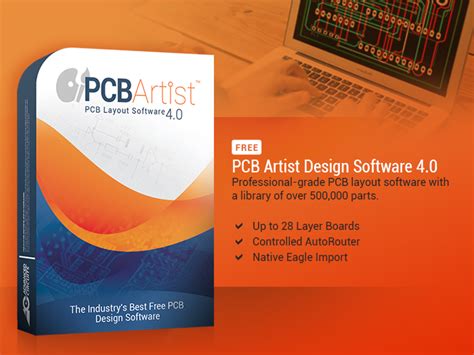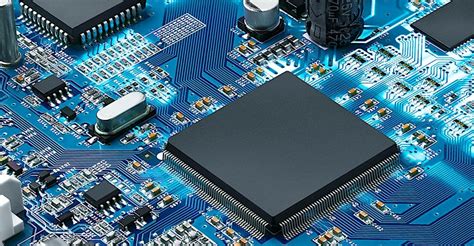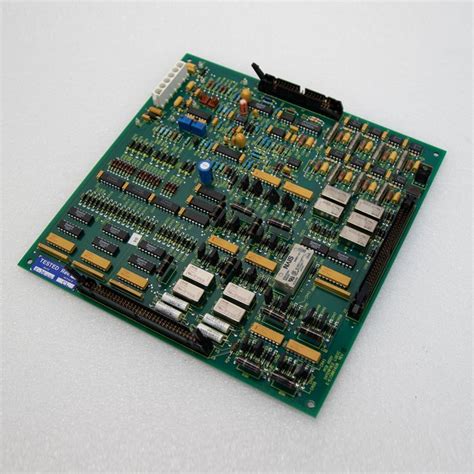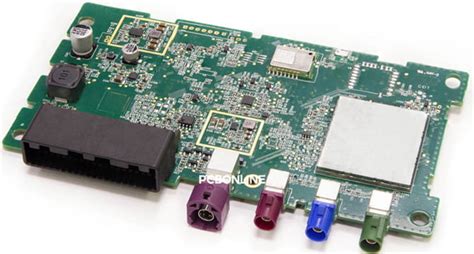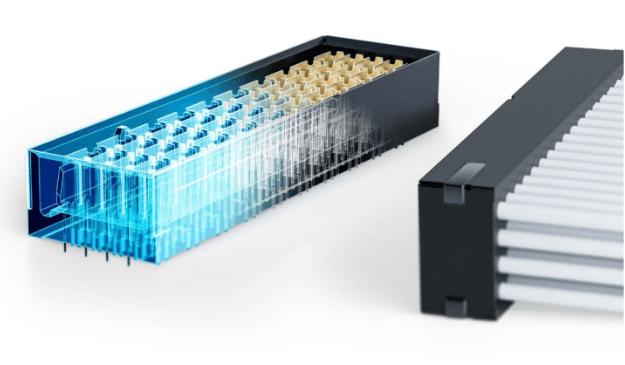Mastering Circuit Card Assembly: Innovations and Best Practices
Key Takeaways
Understanding the intricacies of pcb assembly is crucial for anyone engaged in the manufacturing of modern electronic systems. The world of pcba has seen remarkable advancements, from enhanced automation processes to innovative materials that improve conductivity and durability. Incorporating these advancements can lead to significantly increased production efficiency and product quality. Key practices such as design for manufacturability (DFM) and efficient workflow management play pivotal roles in optimizing the circuit card assembly process. Furthermore, implementing robust quality control measures ensures that every circuit board meets rigorous standards, reducing the likelihood of defects that can lead to costly rework. By honing in on these essential techniques and staying abreast of the latest innovations, manufacturers can elevate their production capabilities and maintain a competitive edge in a rapidly evolving market.
Introduction to Circuit Card Assembly: An Overview
The realm of circuit card assembly (often abbreviated as pcba) is crucial in the manufacturing of electronic systems. At its core, pcb assembly refers to the process of mounting electronic components onto a printed circuit board (PCB), ensuring that the integrated systems function seamlessly. This intricate process combines both manufacturing techniques and design principles, facilitating the creation of reliable and efficient electronic devices.
PCBs serve as the backbone for most modern electronics, offering a physical platform for circuit connections while enabling scalability in complex designs. As technology progresses, the need for more efficient and effective circuit card assembly methods has surged. Innovations in this field are reshaping not only how components are assembled but also how stakeholders ensure quality control throughout production.
“Understanding and mastering the nuances of pcb assembly can significantly enhance product reliability and performance.” This underscores the importance of recognizing best practices within this sector to remain competitive.
The evolution of resources available for circuit card assembly—ranging from advanced imaging techniques to high-speed automated machinery—has transformed traditional methods and opened up new avenues for productivity enhancement. As practitioners delve deeper into these innovations, they contribute not just to individual projects but to a broader standardization that fosters excellence in the world of electronics manufacturing.
Innovations in Circuit Card Assembly Technologies
The realm of PCB assembly has witnessed remarkable advancements, reshaping how modern electronics are produced. Among the innovations driving these changes are sophisticated automated assembly systems, which enhance the speed and precision of PCBA processes. These systems utilize advanced robotics and machine vision technologies to optimize placement accuracy, ensuring that components are aligned perfectly on the circuit card. Additionally, the introduction of AI-driven algorithms plays a pivotal role in real-time monitoring, effectively predicting potential errors before they impact production. This not only accelerates the assembly process but also significantly uplifts product quality. Another notable development is the integration of flexible circuit technology, which allows for more compact and lightweight designs without compromising performance. As the demand for more complex electronic systems continues to soar, these technologies not only address existing challenges but also pave the way for future innovations in circuit card assembly, ensuring that production meets both efficiency and high-quality standards.
Best Practices for Efficient Circuit Card Assembly
Efficient circuit card assembly (pcba) is vital for ensuring high-quality electronic products while minimizing costs and production time. Implementing best practices in this area can yield significant improvements in overall efficiency. First and foremost, using comprehensive design-for-manufacturing (DFM) principles is crucial. These principles ensure that the design of the printed circuit boards (PCBs) aligns seamlessly with manufacturing capabilities, facilitating smoother transitions from design to production.
Another key element is the selection of appropriate materials and components. Opting for high-quality components can reduce the likelihood of failure, enhancing the longevity and reliability of the finished product. Moreover, leveraging surface mount technology (SMT) over through-hole techniques can optimize space usage on circuit boards, allowing for greater complexity in designs while maintaining a compact format.
Regular training and skill development for assembly line workers are equally important as these initiatives not only ensure adherence to proper techniques but also foster a culture of continuous improvement. This training should include familiarization with automated assembly processes since automation plays a crucial role in raising production rates and minimizing human error.
To further enhance assembly efficiency, proper workflow management is necessary. Utilizing lean manufacturing principles—such as identifying and eliminating waste—can lead to smoother processes that sustain optimal productivity levels. Research indicates that establishing organized workstations significantly reduces assembly time; hence, it becomes imperative to evaluate work areas regularly.
The following table summarizes key best practices:
| Best Practice | Description |
|---|---|
| Design-for-Manufacturing | Align design with manufacturing capabilities |
| Material Selection | Use high-quality components for durability |
| Surface Mount Technology | Optimize space and design complexity |
| Worker Training | Foster skills and adherence to techniques |
| Workflow Management | Implement lean principles to minimize waste |
In conclusion, employing these best practices ensures not only efficient pcb assembly but also enhances product quality, ultimately leading to increased customer satisfaction in today’s fast-paced electronics market. By focusing on these areas, companies can position themselves as leaders within the rapidly evolving landscape of electronic systems manufacturing.
Quality Control Measures in Circuit Card Assembly
Maintaining high standards in pcb assembly is crucial for the reliability and performance of electronic systems. Quality control measures encompass a range of techniques and practices designed to minimize defects and enhance the overall integrity of pcba processes. One fundamental practice is the implementation of rigorous inspections at various stages of assembly. This includes visual inspections for solder joint quality, as well as automated optical inspection (AOI) systems that utilize advanced imaging technology to pinpoint potential issues before further processing occurs.
In addition to inspection, statistical process control (SPC) techniques can be employed to monitor critical parameters during circuit card assembly. By analyzing process data, manufacturers can identify variations and address potential problems proactively, thus ensuring that the final product meets stringent quality standards. Furthermore, adherence to international standards such as ISO 9001 helps establish a structured approach to quality management throughout the pcba lifecycle.
Training personnel in best practices related to quality assurance not only fosters a culture of excellence but also equips teams with the skills necessary for effective problem-solving when issues arise. Engaging employees in continuous improvement initiatives can lead to innovative solutions that enhance all aspects of pcb assembly.
Additionally, implementing robust traceability measures allows manufacturers to track components and processes back through each stage of production, making it easier to identify where defects occur and facilitating swift corrective actions. Ultimately, these comprehensive quality control measures contribute significantly to reliable circuit card assembly, paving the way for advanced electronic systems that meet or exceed market expectations.
The Role of Automation in Enhancing Circuit Card Assembly
Automation plays a pivotal role in modern pcb assembly, streamlining processes that once required extensive manual labor. The integration of advanced technologies and automated systems significantly enhances the efficiency and consistency of pcba operations. For instance, automated pick-and-place machines ensure that components are precisely placed on the circuit boards with remarkable speed and accuracy, reducing human error and accelerating production timelines. Furthermore, these systems are equipped with sophisticated software that can perform real-time checks, ensuring that quality standards are consistently met throughout the assembly process. As the demand for smaller, denser, and more complex electronic systems grows, automation allows manufacturers to scale their operations effectively while maintaining high levels of quality control. By implementing automation in circuit card assembly, organizations can not only improve throughput but also adapt quickly to changing market needs, ultimately fostering innovation in electronic design and production within the industry.
Troubleshooting Common Issues in Circuit Card Assembly
In the realm of circuit card assembly (or pcba), challenges can frequently arise that may hinder the efficiency and quality of the production process. Among the most common issues encountered are electrical connectivity failures, misaligned components, and soldering defects. Addressing these problems effectively requires a solid understanding of both the pcb assembly process and the specific technologies employed in manufacturing. For instance, ensuring proper alignment during assembly involves meticulous placement techniques, often enhanced by automated systems that minimize human error. Moreover, routine inspections and the implementation of advanced testing methodologies can help identify defects before they escalate into larger issues. By adopting best practices such as detailed documentation of the assembly process and continual training for personnel, manufacturers can better equip themselves to troubleshoot these common obstacles. Additionally, employing quality assurance protocols ensures that each stage of the pcba is scrutinized to uphold high standards of performance and reliability in modern electronic systems. Effectively addressing these challenges not only improves production yields but also fosters a culture of continuous improvement within organizations focused on circuit card assembly.
Future Trends in Circuit Card Assembly and Electronic Systems
As the landscape of electronic systems continues to evolve, the pcb assembly industry is experiencing remarkable advancements that are shaping its future. Innovations in pcba technologies are one of the key driving forces behind these trends. Emerging techniques such as surface mount technology (SMT) and 3D printing are revolutionizing how we assemble circuit boards, allowing for greater miniaturization and improved performance. Furthermore, the integration of smart materials and advanced soldering processes enhances not only the speed but also the efficiency of production lines.
Additionally, the rise of automation in circuit card assembly significantly contributes to operational excellence. Automated systems equipped with artificial intelligence (AI) can analyze production data in real time, identifying inefficiencies and adapting processes on the fly. This shift towards automation ensures higher precision in producing circuit boards while simultaneously minimizing human error.
Moreover, sustainability is emerging as a crucial trend within the industry. Producers are increasingly focusing on environmentally friendly materials and processes that reduce waste and energy consumption during pcba operations. As electronic devices become more pervasive in our daily lives, addressing sustainability will be pivotal for future growth and compliance with regulatory standards.
In conclusion, staying abreast of these innovations, efficiency improvements, and sustainability efforts will be essential for organizations looking to thrive in the dynamic realm of circuit card assembly and electronic systems. Emphasizing these trends not only supports operational success but also aligns with broader industry shifts toward a more responsible approach to electronics manufacturing.
Conclusion: Elevating Standards in Circuit Card Assembly
In the rapidly evolving field of pcb assembly, maintaining high standards is crucial for the success of electronic manufacturing. As we have explored throughout the article, the integration of advanced technologies and best practices significantly enhances the efficiency and quality of pcba processes. Employing innovative techniques, such as automated inspections and real-time monitoring, not only minimizes errors but also optimizes production timelines. Furthermore, fostering a culture of continuous improvement among teams is essential. By encouraging regular training and updates on the latest trends, manufacturers can not only meet but exceed industry standards. Ultimately, elevating standards in circuit card assembly requires a commitment to embracing new methodologies and technologies while prioritizing quality control measures at every stage of the process. This holistic approach ensures that modern electronic systems are both reliable and efficient, positioning companies for success in a competitive market.
Conclusion: Elevating Standards in Circuit Card Assembly
In the ever-evolving field of circuit card assembly (PCBA), staying ahead requires not only understanding current technologies but also embracing innovations that drive efficiency and quality. As highlighted, the integration of advanced automation techniques has proven to minimize errors and enhance operational speed, thereby facilitating seamless production of PCB assembly processes. Moreover, adhering to best practices is fundamental for achieving optimal results; this includes rigorous quality control measures that ensure each card meets high standards before it enters the market. By prioritizing these elements, organizations can significantly improve their competitiveness in the electronics sector. The ongoing refinement of these practices will undoubtedly influence future trends, setting a benchmark for excellence and inspiring continued progress within the realm of circuit card assembly. This commitment to quality and innovation positions manufacturers not just as participants but as leaders in a rapidly advancing industry.
FAQs
What is circuit card assembly (CCA)?
Circuit card assembly (CCA) refers to the process of mounting electronic components on printed circuit boards (PCBs) to create functional electronic assemblies. It plays a vital role in the manufacturing of electronics by ensuring that various components are securely attached and connected.
What are the best practices for efficient PCB assembly?
Efficient PCB assembly involves several best practices, including thorough design reviews, implementing automated processes where applicable, maintaining a clean workspace, and selecting high-quality materials. Utilizing effective project management also contributes to reducing errors and enhancing productivity.
How does quality control affect PCBA?
Quality control is essential in pcba because it ensures that each assembly meets the required specifications and functions correctly. Implementing rigorous testing protocols during and after production helps identify defects early on, minimizing costly repairs or failures.
What innovations are shaping the future of circuit card assembly?
Recent innovations in circuit card assembly technologies include advanced materials that improve performance, smarter automated systems for higher efficiency, and innovative testing methods such as in-circuit testing (ICT) to detect errors. These advancements are driving improvements in overall production quality.
How can automation enhance circuit card assembly processes?
Automation enhances circuit card assembly processes by increasing speed and accuracy in component placement, reducing human error, and enabling scale production without a significant increase in labor costs. This leads to greater consistency and improved efficiency throughout the production process.


